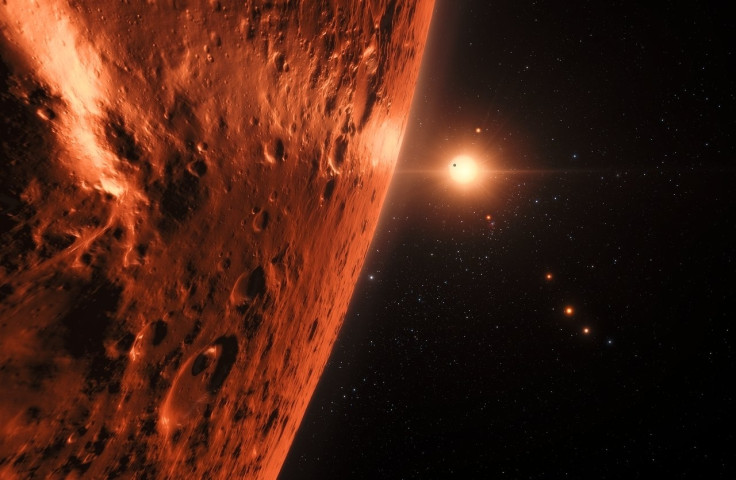Hubble hints that 3 Earth-sized exoplanets may have substantial amounts of water
The planets of the TRAPPIST-1 system are promising candidates in the search for extraterrestrial life.

New observations from the Hubble telescope have provided the first tantalising hints that large amounts of water may still exist on the planets of the TRAPPIST-1 star system. Scientists believe that for life as we know it to exist outside our own planet, surface water must be present.
Intriguingly, three of the four outermost planets lie in the ultra-cool dwarf star's habitable zone – the range of orbits around a star which could support water on the surface given the right atmospheric conditions.
The seven recently discovered exoplanets orbiting the TRAPPIST-1 star 40 light-years away, are the most Earth-sized planets discovered in a single system to date.
Vincent Bourrier, from the Observatoire de l'Université de Genève, who led the international team of astronomers, makes it clear though, that with the data they have and current telescope technology, no definitive conclusion can be drawn on the water content of the exoplanets. However, scientists no have a focus for future research.
"While our results suggest that the outer planets are the best candidates to search for water with the upcoming James Webb Space Telescope, they also highlight the need for theoretical studies and complementary observations at all wavelengths to determine the nature of the TRAPPIST-1 planets and their potential habitability," adds Bourrier.
The next generation James Webb Telescope is set to launch next year as part of a collaboration between Nasa, the European Space Agency and the Canadian Space Agency. It will be more powerful than current telescopes, offering unprecedented resolution, and will be able to directly image exoplanets such as those in the TRAPPIST-1 system.
Bourrier says the exoplanets in this planetary system are ripe for further study, principally because they are relatively close and therefore brighter than many other potentially habitable exoplanets. This makes them much easier to observe.
To arrive at the findings, the team used Hubble's Space Telescope Imaging Spectrograph (STIS) to analyse the amount of ultraviolet radiation each planet in the system was receiving.
"Ultraviolet radiation is an important factor in the atmospheric evolution of planets,"said Bourrier. "As in our own atmosphere, where ultraviolet sunlight breaks molecules apart, ultraviolet starlight can break water vapour in the atmospheres of exoplanets into hydrogen and oxygen."
Because hydrogen gas is so light, it can escape the atmosphere of the exoplanets and be detected by Hubble, suggesting the possible presence of atmospheric water vapour. The ultraviolet radiation emissions being observed suggest that the planets have lost huge amounts of water of the course of their history, especially two of the innermost planets TRAPPIST-1b and TRAPPIST-1c.
The astronomers found that while the inner planets may have lost more than 20 Earth-oceans-worth of water over their 8-billion-year life cycles, it seems the outer planets e, f and g – which lie in the habitable zone – may have lost much less, and, therefore, could still have some on their surfaces.
Water vapour is sometimes considered conclusive evidence for the presence of liquid water, however, it should be noted that water vapour could exist where liquid water does not.
© Copyright IBTimes 2025. All rights reserved.





















